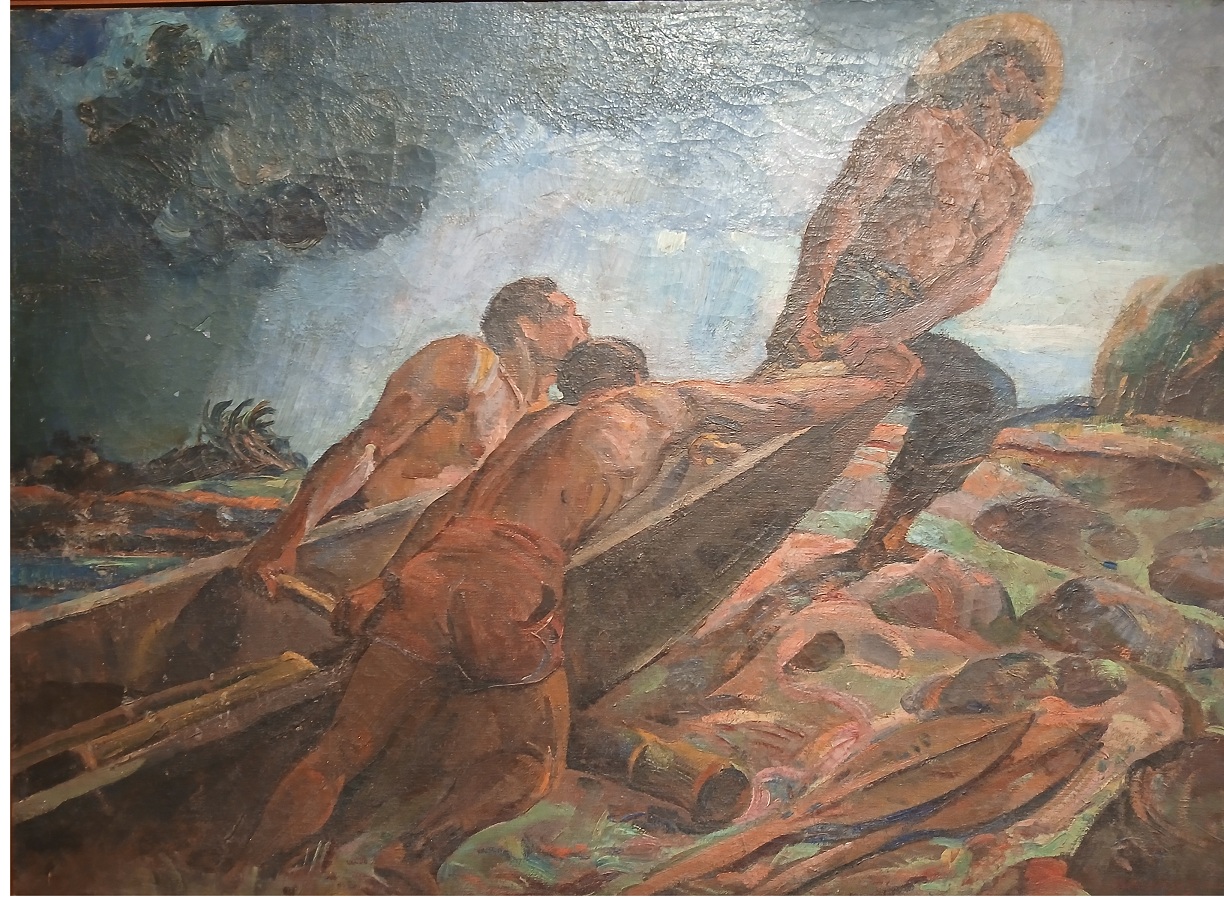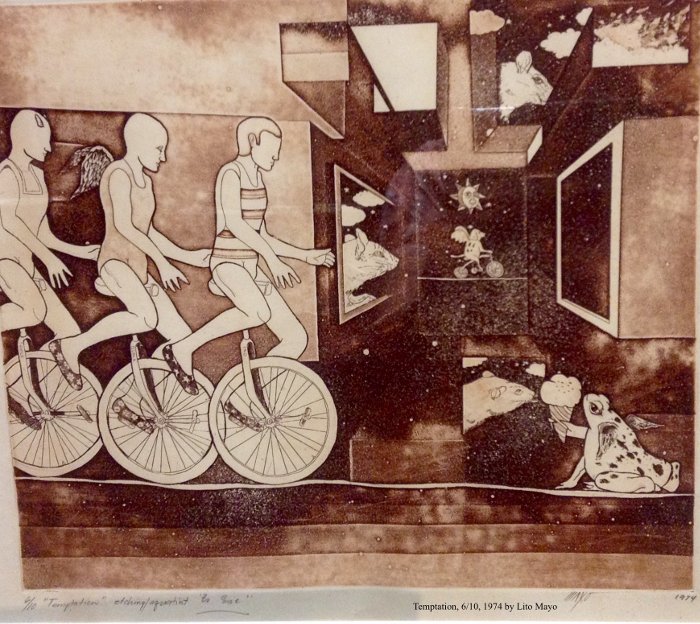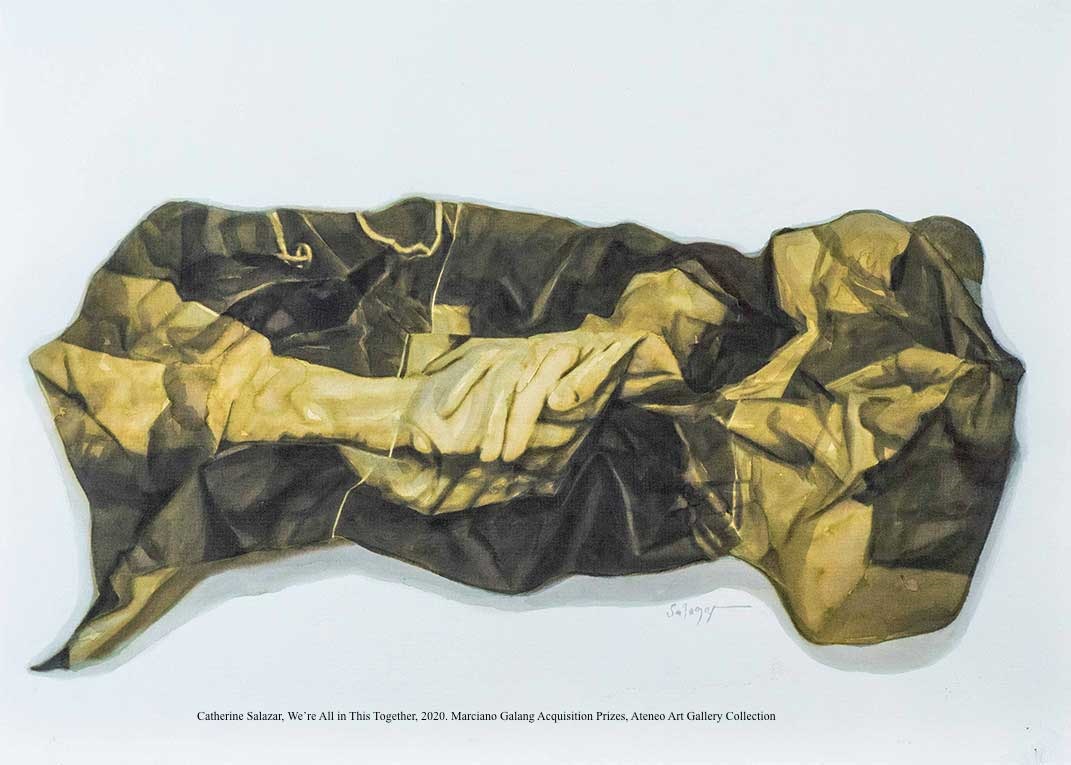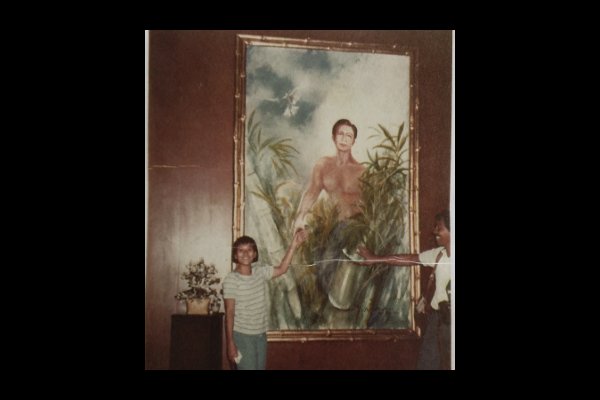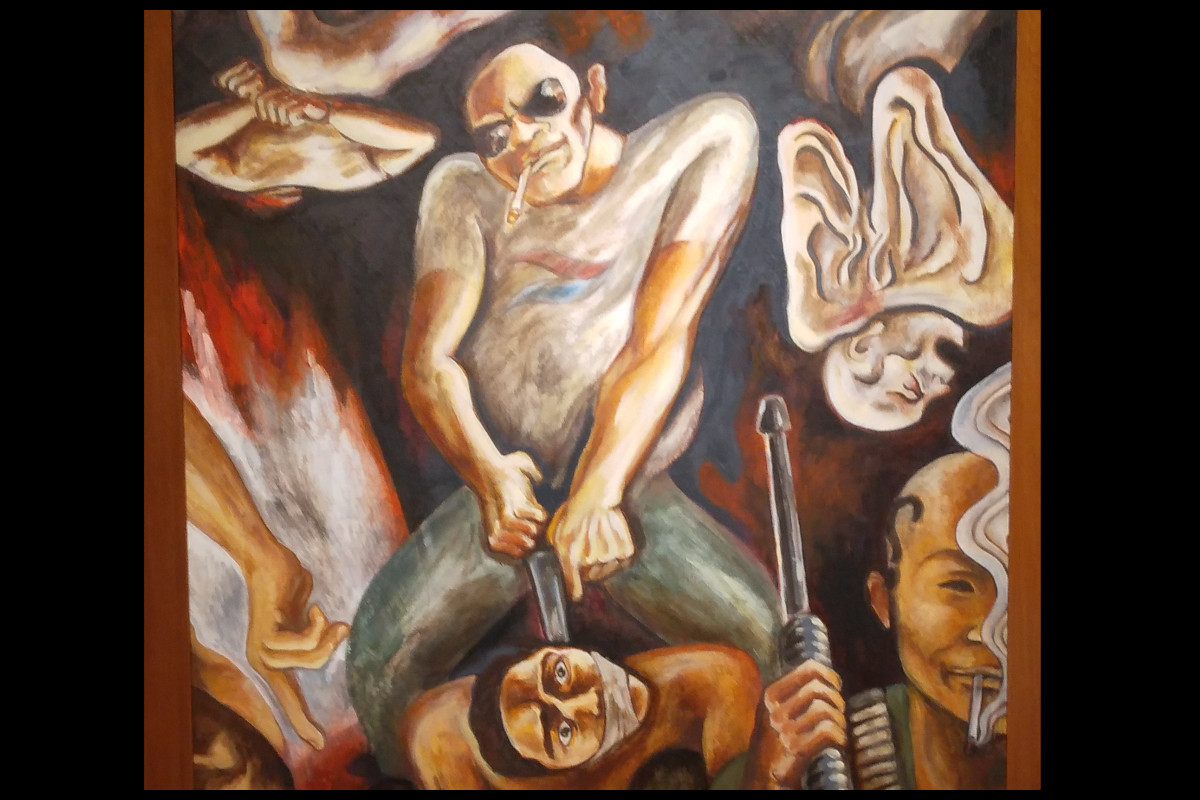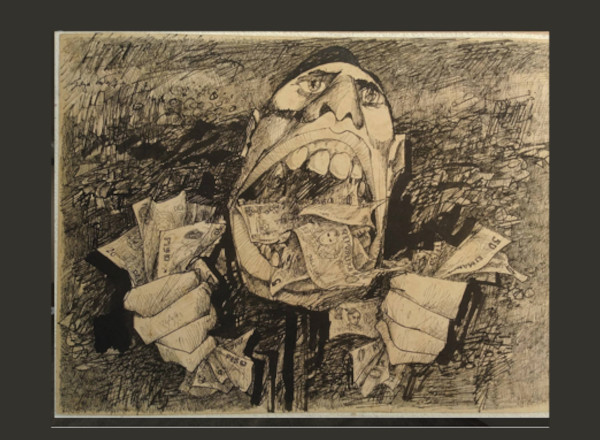The Ateneo Art Gallery (AAG) presents A Synergy of Ventures: The Post War Art Scene, an exhibition that commemorates the birth centennial of Fernando Zobel (1924-1994), the founding donor of the university’s museum. It runs until 12 July 2025.
Between 1959 and 1969, Zobel had gifted Ateneo with 221 items, consisting of “67 paintings, 127 prints, 25 drawings, and 2 sculptures…” Of this lot, 18 works are Zobel’s. The donation led to the establishment of the AAG in 1960, the first modern and contemporary art museum in the country.
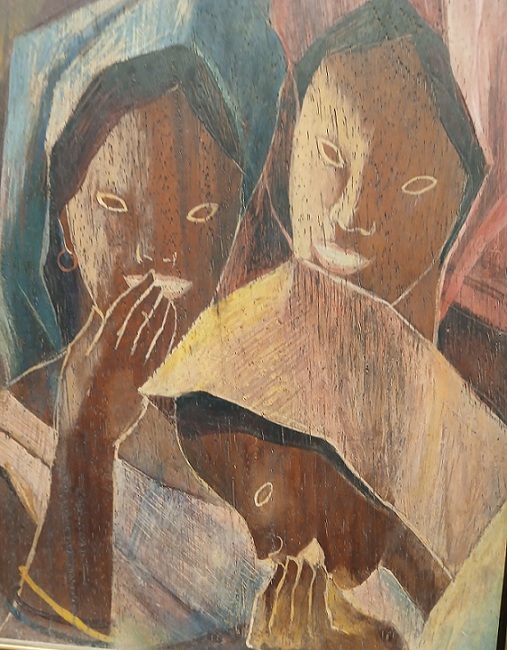
Stalwarts
Selected works from Zobel’s core collection and other works loaned from other collections comprise the exhibit.
Synergy is a rare opportunity to glimpse the beginnings of artists considered as “stalwarts in Philippine art history”; many have been designated as National Artist, the country’s highest cultural honor. They all shared a common desire “to develop a visual language that was more attuned to the tensions and anxieties” of the postwar years.
These stalwarts include HR Ocampo, Cesar T. Legaspi, Carlos V. Francisco, Vicente S. Manansala, Ang Kiukok Anita Magsaysay-Ho, Romeo V. Tabuena, Galo B. Ocampo, Fernando Zobel, Arturo Luz, J. Elizalde Navarro, Manuel Rodriguez Sr, Nena Saguil, Jose Joya, Abdulmari Imao, Antonio Austria, Lamberto Hechanova, and Lee Aguinaldo, among many others
A light brown plywood wall greets visitors with a portrait of a young Zobel. A popular material during the postwar years, lawanit is a nostalgic reference to an affordable material that artists used, as seen in some displayed works.
Intentionally, a mix of different styles were hung together to underscore “the explosion of different approaches to figuration” in the 1950s and 1960s, notes Boots Herrera, AAG director and chief curator.
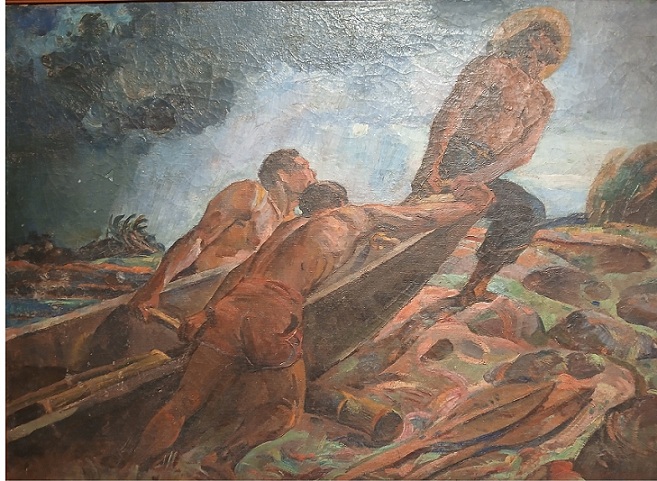
A new visual idiom
Long before World War II, Victorio C. Edades (1895-1985), Galo Ocampo, and Carlos “Botong” Francisco, championed the path of modernism in Philippine art amidst the debate between the Conservatives and the Moderns on the portrayal of reality, romanticized beauty vs. grim reality.
The postwar era led to the rise of the Neo-Realists and the Thirteen Moderns, a group of artists who explored the new realities and social tensions of the time, and experimented with non-objective and abstract art.
It was an exhilarating period of exploration with techniques, styles, and materials. HR Ocampo’s distinct biomorphic works used the palette knife instead of the paint brush; Zobel used a syringe to apply thin lines of pigment; Luz chose a stylus to create delicate lines.
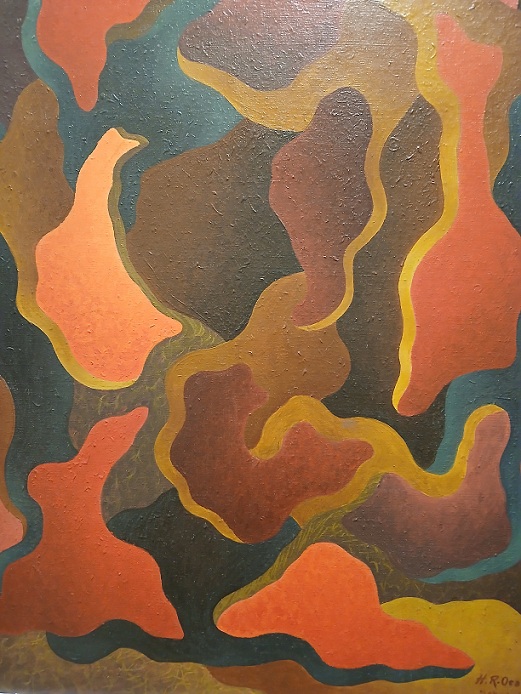
Hernando R. Ocampo (Santa Cruz, Manila, 1911-1978): National Artist for Visual Arts, 1991. A self-taught painter, Ocampo’s works became more stylized towards abstraction that focused on design, color, and texture between 1946 and 1963. His work evoked the lush and tropical Philippine landscape. Vibrant colors with its gradient of hues suffused his geometric and biomorphic forms.
Vicente Manansala (Macabebe, Pampanga, 1910-1981): National Artist for Painting, 1981. In his style of transparent cubism, he simplified shapes and colors, rendering figures and objects into basic geometric shapes while applying layers of colors. His subjects include urban and rural themes, the Filipino family, mother and child, chickens and carabaos. His works on display include Jeepneys, 1951 and Banaklaot, 1948 that won Third Prize at the Art Association of the Philippine (AAP) First National Art Exhibition, July 1948.

Cesar Legaspi (Tondo, Manila,1917-1994): National Artist for Visual Arts, 1990. An advocate of modern art since his early years, Legaspi’s work shows the influence of cubism; the use of rhythmic patterns in curvilinear lines and planes and “the expressive potential of color.” His Stairway to Heaven, 1948 won First Prize in Modern, Oil Category, AAP 1949 competition.
Carlos V. Francisco (Angono, Rizal, 1912-1969). National Artist for Painting, 1973. Filipino folk and vernacular aesthetics based on legends, myths, and history characterize his work. Known for his murals such as Five Hundred Years of Philippine History for the 1953 International Fair in Manila and Filipino Struggles Through History, 1964 for the Manila City Hall and transferred later to the National Museum.
Anita Magsaysay-Ho (Manila, 1914-2012): The only woman in the Thirteen Moderns, she uses expressive distortion in her works with modernist tendencies in design, movement, and rhythm. She celebrates the women of the Philippines, working in domestic spaces and outside harvesting fruits or selling fish.
Arturo Luz (Manila, 1926-2021): National Artist for Visual Arts, 1997. Known for minimalist and linear abstract expressions, with subject matter reduced into lines and planes, his work included painting, printmaking, sculpture, and design. His early works show geometric and elongated figures, seen in Street Musicians, 1951 and Candle Vendors, 1952. Between 1967 and 1967, he started his Carnival series and Cyclist series.
Graphic arts: The 1950s saw an increasing interest in printmaking. A younger generation of artists took graphic arts by heart, among them Manuel Roriguez Jr, Virgilio Aviado, Imelda Cajipe-Endaya, and Brenda Fajardo.
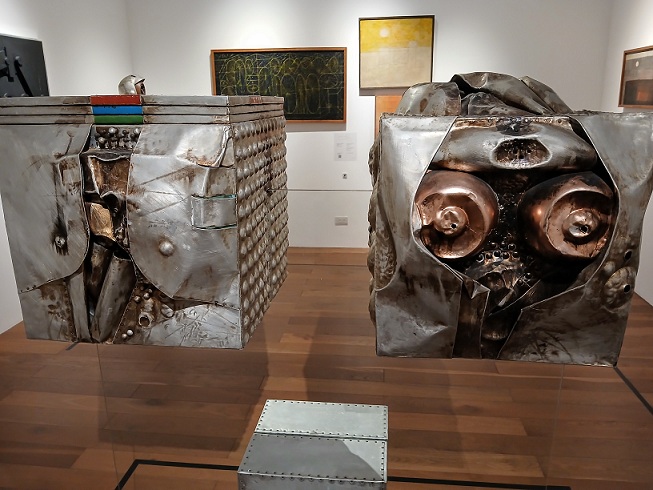
Manuel Rodriguez Sr established the Philippine Association of Printmakers in 1968. Today, it is known as the Association of Pinoyprintmakers (AP) with its studio at the CCP Complex.
Rodolfo Paras-Perez started doing woodcuts as his primary medium in 1960; other artists did fine prints: Hilario Francia, Cenon Rivera, Florencio B. Concepcion, and Mario Parial. Paras-Perez’s Kiss, 1962 won first prize at the Art Association of the Philippines (AAP) graphic art competition in the same year.
